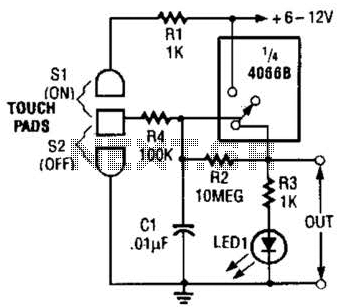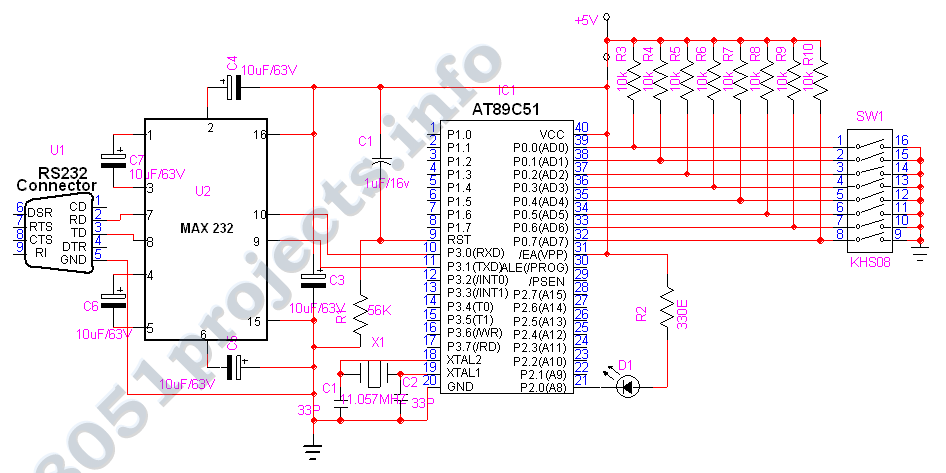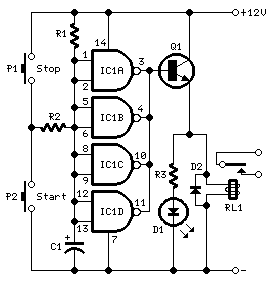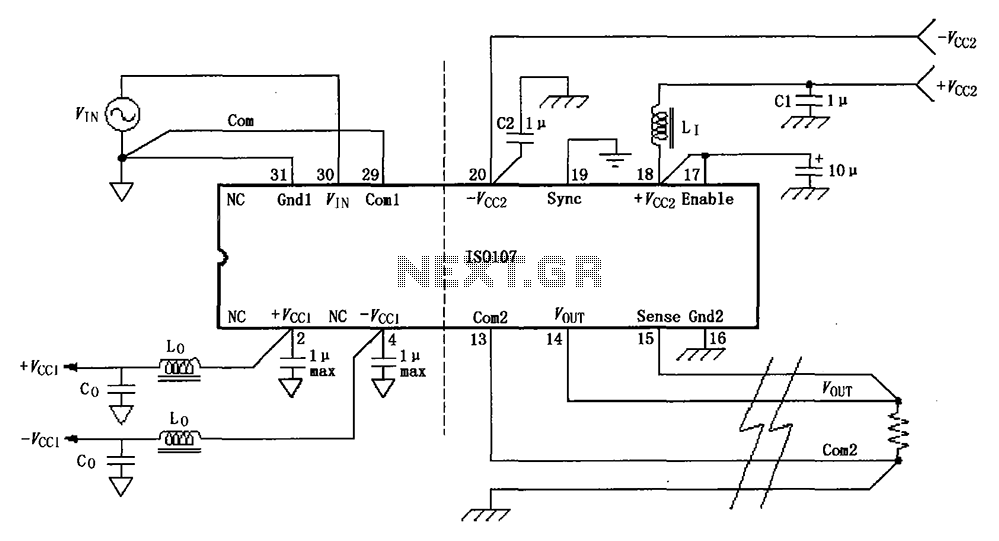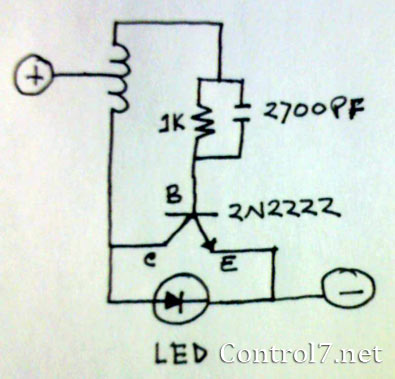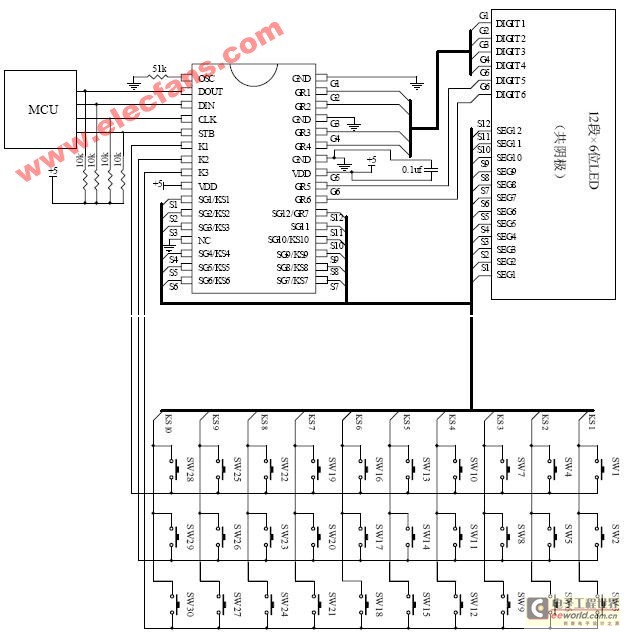
booster radio fm schematic circuit
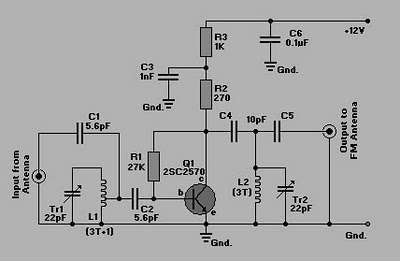
This is a simple circuit of an FM booster designed to enhance the reception of programs from distant FM stations. The amplifier effectively captures signals from far-off FM stations. The configuration is set up as a common-emitter tuned RF pre-amplifier utilizing the VHF/UHF transistor Q1, specifically the 2SC2570 model (only C2570 is marked on the transistor body). It is recommended to assemble the circuit on a high-quality PCB, preferably made of glass-epoxy. Input and output trimmers (VC1/VC2) should be adjusted for optimal gain.
The FM booster circuit operates by amplifying weak radio frequency signals, making it possible to receive distant FM broadcasts with clarity. The core component, the 2SC2570 transistor, is a VHF/UHF transistor known for its high frequency and low noise characteristics, which are essential for effective radio signal amplification.
The common-emitter configuration is chosen for its ability to provide significant voltage gain, which is crucial for boosting weak signals. The circuit typically includes a tuned circuit that helps select the desired frequency while rejecting unwanted signals. This is achieved through the use of inductors and capacitors that form a resonant circuit, ensuring that the amplifier is tuned to the frequency of the FM station being received.
The assembly of the circuit on a glass-epoxy PCB is recommended due to its durability and superior insulating properties, which help maintain signal integrity. The input and output trimmers (VC1 and VC2) are variable capacitors that allow for fine-tuning of the circuit's performance. Adjusting these components optimizes the gain, ensuring the best possible reception of FM signals.
Overall, this FM booster circuit is a valuable tool for enhancing radio reception, particularly in areas where signal strength is weak. Proper assembly and tuning are critical to achieving the desired performance, making this circuit an effective solution for improving FM listening experiences.Here is a simple circuit of an FM booster that can be used to listen to programmes from distant FM stations clearly. This amplifier will pull in all distant FM stations clearly. The circuit is configured as a common-emitter tuned RF pre-amplifier wired around VHF/UHF transistor Q1.
2SC2570. (Only C2570 is annotated on the transistor body. ) Assembl e the circuit on a good-quality PCB (preferably, glass-epoxy). Adjust input/ output trimmers (VC1/VC2) for maximum gain. 🔗 External reference
The FM booster circuit operates by amplifying weak radio frequency signals, making it possible to receive distant FM broadcasts with clarity. The core component, the 2SC2570 transistor, is a VHF/UHF transistor known for its high frequency and low noise characteristics, which are essential for effective radio signal amplification.
The common-emitter configuration is chosen for its ability to provide significant voltage gain, which is crucial for boosting weak signals. The circuit typically includes a tuned circuit that helps select the desired frequency while rejecting unwanted signals. This is achieved through the use of inductors and capacitors that form a resonant circuit, ensuring that the amplifier is tuned to the frequency of the FM station being received.
The assembly of the circuit on a glass-epoxy PCB is recommended due to its durability and superior insulating properties, which help maintain signal integrity. The input and output trimmers (VC1 and VC2) are variable capacitors that allow for fine-tuning of the circuit's performance. Adjusting these components optimizes the gain, ensuring the best possible reception of FM signals.
Overall, this FM booster circuit is a valuable tool for enhancing radio reception, particularly in areas where signal strength is weak. Proper assembly and tuning are critical to achieving the desired performance, making this circuit an effective solution for improving FM listening experiences.Here is a simple circuit of an FM booster that can be used to listen to programmes from distant FM stations clearly. This amplifier will pull in all distant FM stations clearly. The circuit is configured as a common-emitter tuned RF pre-amplifier wired around VHF/UHF transistor Q1.
2SC2570. (Only C2570 is annotated on the transistor body. ) Assembl e the circuit on a good-quality PCB (preferably, glass-epoxy). Adjust input/ output trimmers (VC1/VC2) for maximum gain. 🔗 External reference
